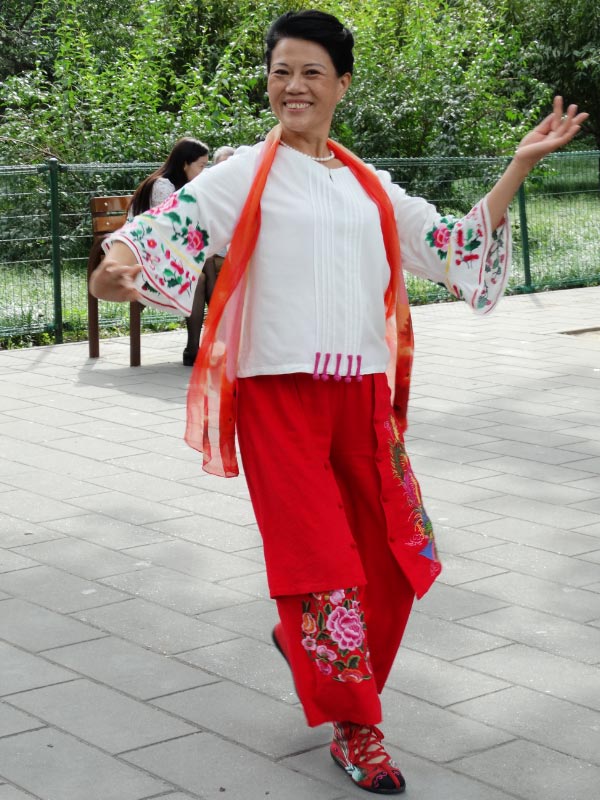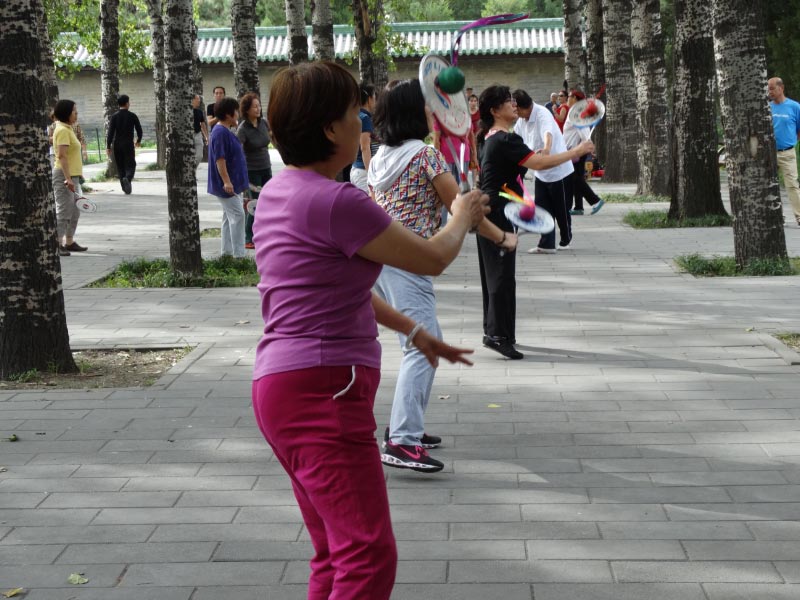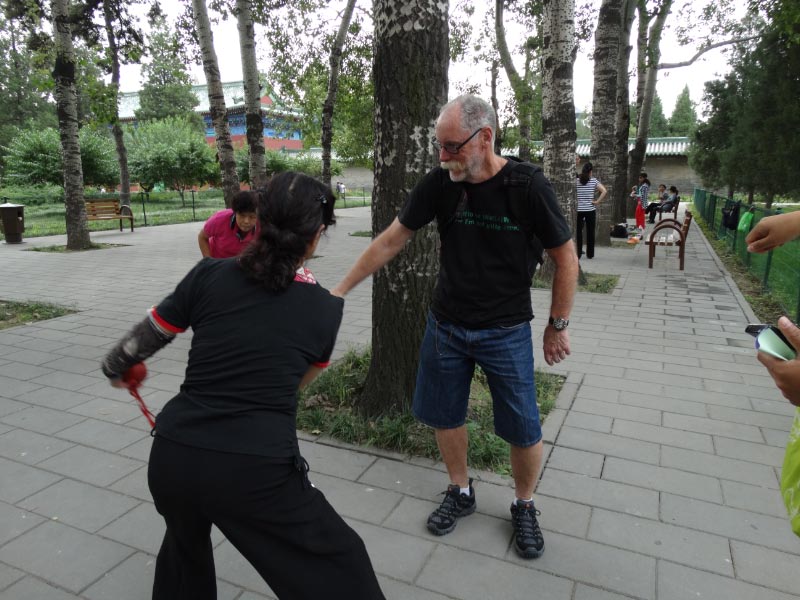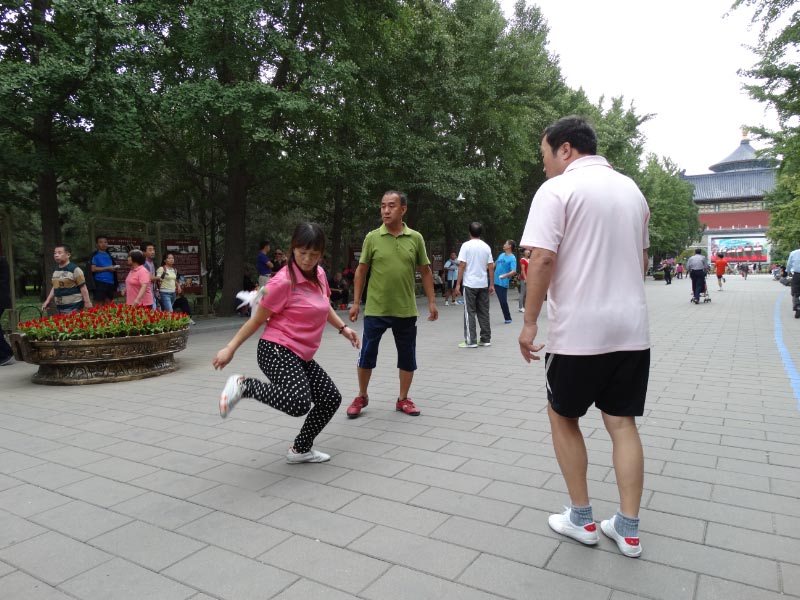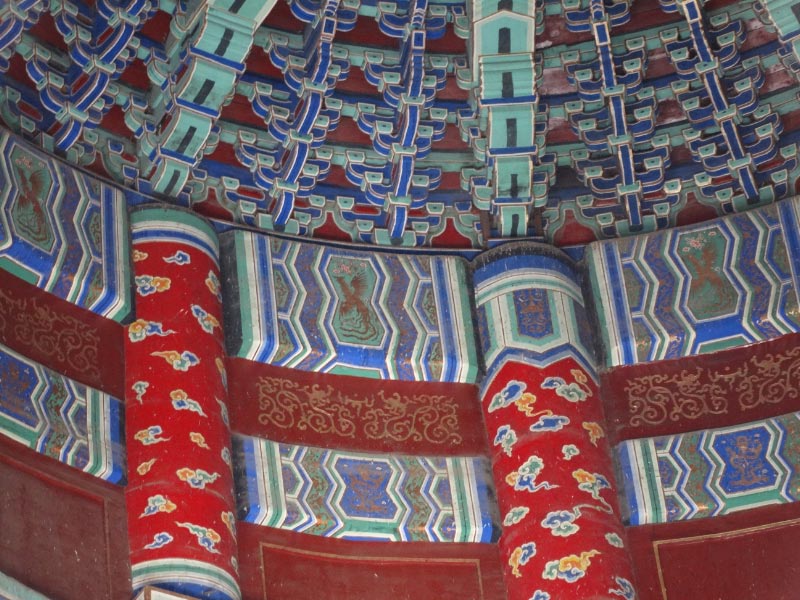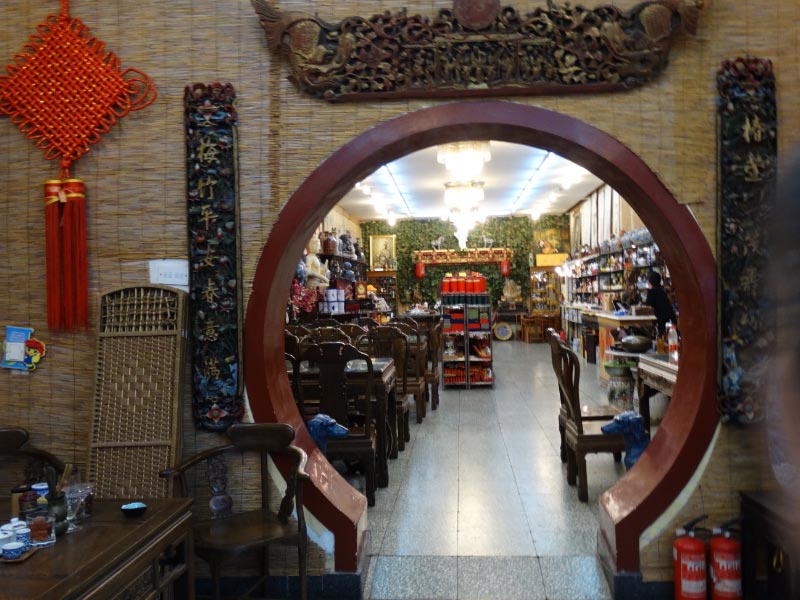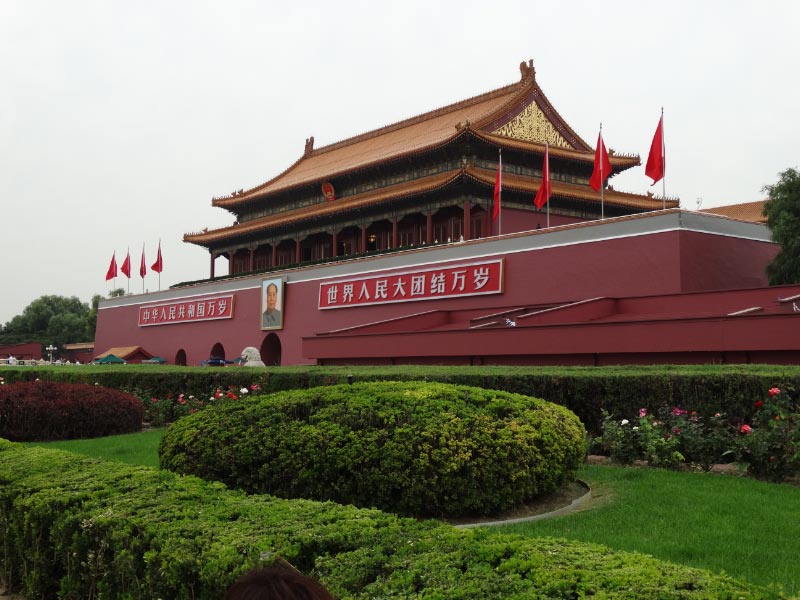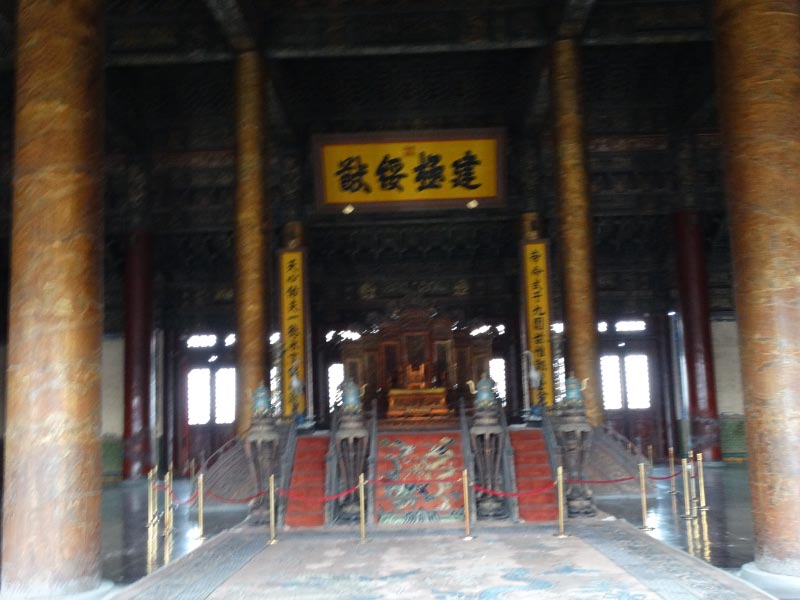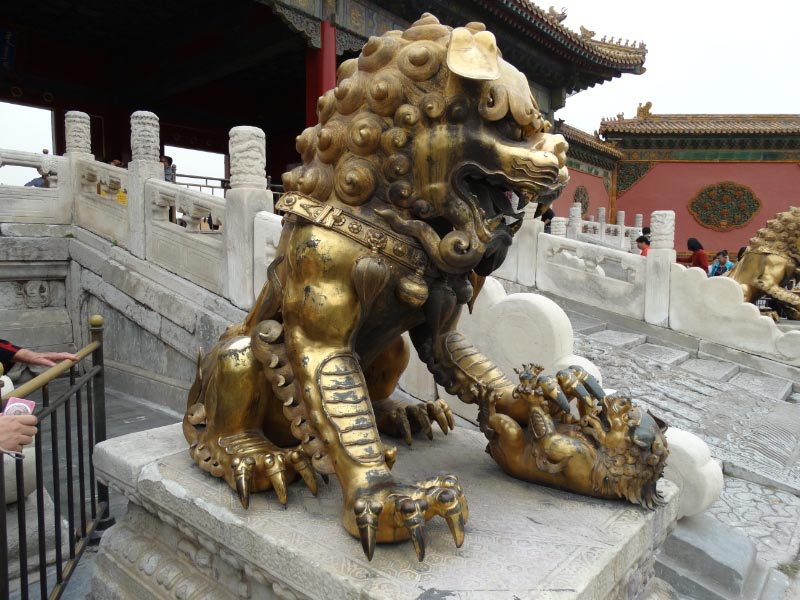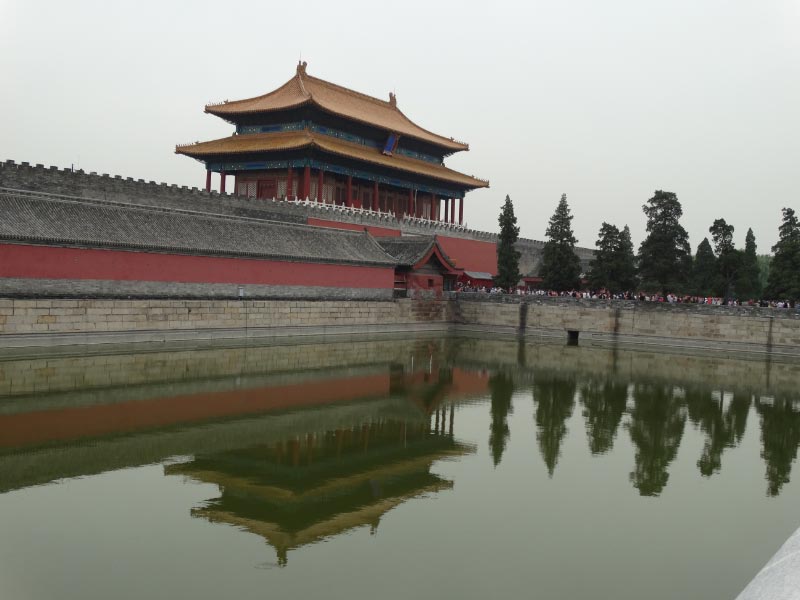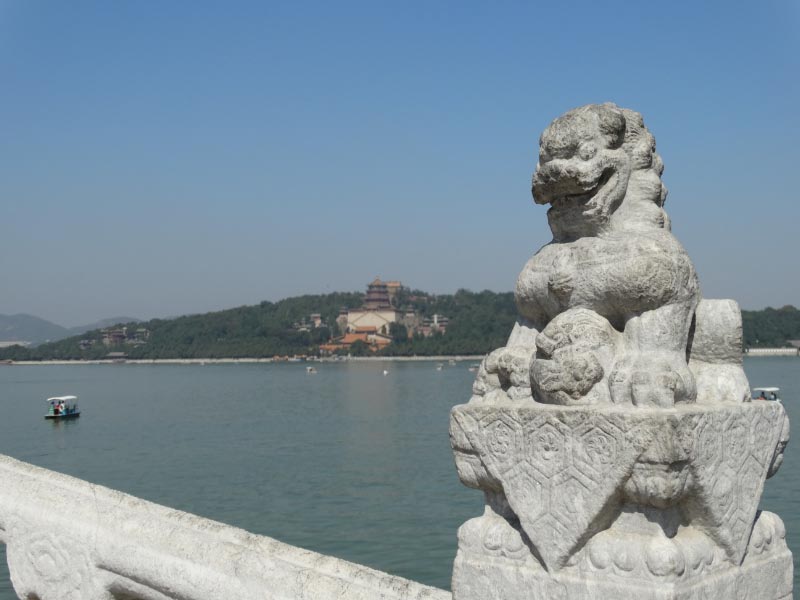Monday 15 to Thursday 18 September
It is in Beijing that the history of China started to make sense. We had heard a lot about the different dynasties but the information felt scrambled.
Our Beijing guide, Lucy, took as through the Temple of Heaven and explained how the dynasties followed. She also had some simple but excellent posters which showed the important emperors, rather than filling our heads with them all. So now I know the beginning was 2600BC, that’s 4,600 years ago. The major periods were:
- 2600BC – 2200BC Five Emperor Dynasties
- 1600BC – 425BC Shang and Zhou Dynasties
- 221BC – 220AD Qin and Han Dynasties.
- 220AD – 265AD Period of the Three Kings
- 618AD – 1278AD Tang and Song Dynasties
- 1367AD – 1638 AD Ming Dynasty
- 1638AD – 1908AD Qing Dynasty
The right to worship heaven in China was carried out from the 26th century BC to the beginning of the 20th century.
The Temple of Heaven was built in 1420, the 18th year of the reign of the Emperor Yongle of the Ming dynasty. It was constructed in accordance with the Chinese traditional rite system for the purpose of worshipping heaven.
As well as a concise history of the Chinese Dynasties at the Temple of Heaven, we were also treated to a display of “keep fit” in the gardens surrounding the temple. This daily ritual, carried out mostly by retired and unemployed people, is a mix of sports and dance. Whilst none of the activities were particularly strenuous, the agility required for the various games amazed us. There was movement to swing a bat and ball or catch a ring around your neck, play hackie sack or dance steps in unison. I think our walking group could take a few lessons.
We were then treated to a tea ceremony or perhaps more correctly, a demonstration of how to make various teas and the benefits of drinking them. We tried five different teas and not a traditional black or green tea amongst them. I don’t really like tea although I do like infusions. But I could easily enjoy any of the teas presented.
And then the highlight of Beijing – Tienanmen Square and the Palace Museum.
In true Chinese style the day was grey although warm, but we had left the humidity behind in Shanghai.
We have seen many famous points of conflict including Taksim Square in Istanbul and Tahir Square in Cairo. Tienanmen Square is enormous, measuring 880m x 500m. It is no longer an open square as Mao’s mausoleum has been placed in the centre.
Security is heavy, bags are searched and you are constantly watched.
Professional photographers are everywhere and whilst they ignore us westerners with our big cameras, they have a ready market for the Chinese nationals, who rely on cell phones as a camera, but prefer a better photo in such an important place of pilgrimage.
From Tienanmen Square we crossed the road to the Forbidden Palace. The palace was the Emperor’s home in the Ming and Ong dynasties and was forbidden to ordinary people.
It was built between 1406 and 1420, when Beijing was the seat of government during the Ming and Ong dynasties. It is bigger and grander and more decadent than anything outside of Versailles. Gate after gate leads to the inner sanctums where the Emperor, the Empress, the concubines and eunuchs, the soldiers and administrators all lived.
The Ong dynasty ended in 1911.
Since 1949 when the People’s Republic of China was founded, the Forbidden City was preserved and repaired. It, along with Tienanmen Square, is a favourite place of pilgrimage for Chinese. A must visit just once in a lifetime. It was extremely crowded and for Bruce, no opportunity for a crowdless photo.
We finished the day with a visit to a Chinese Acrobatic show. There were fan dancers, umbrellas dancers, crazy hat juggling dancers. Did you know that you could get 14 young girls onto a single bicycle? Did you know that you can get 8 motorcyclists into a caged sphere, all riding in different directions – just like Chinese traffic? It was a very impressive show.
Our second day in Beijing was a tour to the Great Wall and the Ming Tombs. That’s another story, another page.
Our third and last day all happened too fast. With bags packed and in the car we headed to the post office to send Bruce’s non-functioning camera and lens home. We had to wait for the post office to open. They then took one look at it and decided it was much too fragile for the Chinese postal service. We much appreciated Lucy’s assistance especially when she reluctantly agreed to arrange a courier service for it instead.
We then took a rickshaw ride around the Hutong district. This is one of the few old districts surviving in Beijing, and in fact in the country. Here houses are cramped, with limited utilities – few have bathrooms or toilets, so public utilities are the only option. On the up side, the people who live in these area are likely to own their properties, whereas most Chinese properties are on a 75 year lease, by which time they are probably only good for demolition.
Our guide followed us on his bike, yelling out interesting information. Part of the tour included a visit to a local home. This home was obviously set up as a tourist facility and when we were there “the family” were busy preparing lunch for a subsequent group of visitors. Our host entertained us with a musical instrument. The house was tiny, with limited relaxation space. The little courtyard was filled with pot plants, goldfish bowls and cricket cages.
Our last stop in Beijing was to the Summer Palace, a magnificent extravaganza created by the Empress Dowager Cixi around 1888. She used the funds assigned to building the Chinese Navy to extend existing gardens into an exotic lake and garden. Of course the navy could use the lake for training exercises.
It is a beautiful garden and in keeping with Chinese standards, well-kept because of its historical importance and its ability to draw the tourist (paying) crowds.
Lucy was a great guide, helping us understand so much more of China. Some interesting information passed on to us was that 90% of Chinese population are Han descending from the period 220AD – 265AD. The remaining 10% is made up of 10 different ethnic minorities.
China! Worth every hour you spend there.
Some links in this page are from Wikipedia
e_header.jpg)

